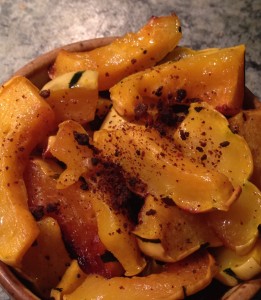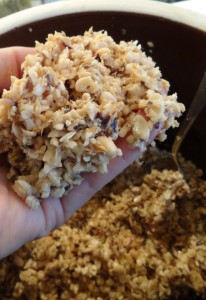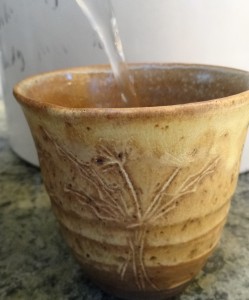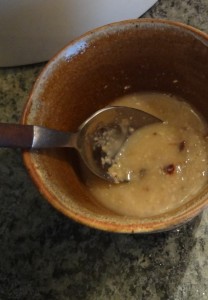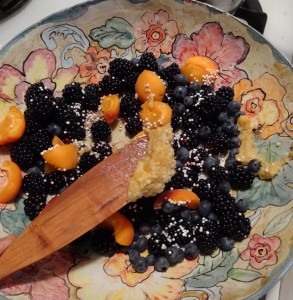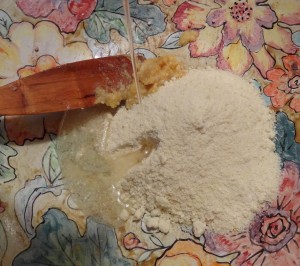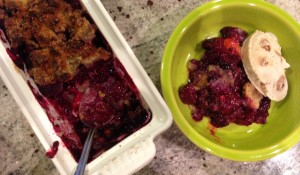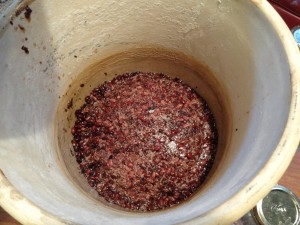 The end result of this ferment is a creamy, rich and delicious ball of goodness. And with a texture and flavor much more reminiscent of a soft stinky cheese than of egg yolk. I first read of this process in The Book of Miso, by William Shurtleff & Akiko Aoyagi.
The end result of this ferment is a creamy, rich and delicious ball of goodness. And with a texture and flavor much more reminiscent of a soft stinky cheese than of egg yolk. I first read of this process in The Book of Miso, by William Shurtleff & Akiko Aoyagi.
It’s fairly straight forward: bury egg yolks in miso, wait, recover yolk, and enjoy.
I ferment a dozen or two at a time, and my method was inspired by the playing with fire & water food blog [http://www.playingwithfireandwater.com/foodplay/].
Materials: fermenting vessel, miso paste, soft boiled or raw egg yolks, and cheese cloth. These are layered in a crock in a sandwich-like fashion. I start with a 1-2” layer of miso, and then place a single layer of cheese cloth on top. I use a handle of a wooden spoon (it has a very bulbous end) and push divots into the miso the size of the yolks, pressing the cheese cloth into the miso as I go. Next, I carefully set the yolks into the divots, and cover with another layer of cheese cloth. I then cover it all with another layer of miso paste. I repeat this process until I run out of yolks, or room in the crock.
An important detail is to keep the corners of the cheese cloth visible on top of the layer of what is on top of it , so that you can lift out what is on top of it, either a layer of miso, or of yolks, easily and cleanly. The whole purpose of the cheese cloth is to be able to recover the yolks as whole discrete balls, and not as mushy smashed blobs full of miso bits. And it works really slick, too. Here are some photographs.
 Putting divots into the miso on top of a layer of cheese cloth.
Putting divots into the miso on top of a layer of cheese cloth.
 Adding a raw yolk.
Adding a raw yolk.
 Five soft boiled yolks wrapped in cheese cloth and ready to be covered in miso. I’ve pulled in the corners of the cheese cloth so they will be revealed after I remove the layer of miso that will sit on top of them.
Five soft boiled yolks wrapped in cheese cloth and ready to be covered in miso. I’ve pulled in the corners of the cheese cloth so they will be revealed after I remove the layer of miso that will sit on top of them.
 Adding a top layer of cheese cloth and miso.
Adding a top layer of cheese cloth and miso.
 These yolks are ready to harvest. I’ve removed the top layer of miso (bowl on left) and exposed the yolks beneath.
These yolks are ready to harvest. I’ve removed the top layer of miso (bowl on left) and exposed the yolks beneath.
 Here is the layer of yolks removed inside their own cheese cloth, and a solo yolk about to be tied for drying.
Here is the layer of yolks removed inside their own cheese cloth, and a solo yolk about to be tied for drying.
 These yolks have been tied in cheese cloth and draped over a beer bottle. They’ll stand in the fridge for a couple weeks and dry out to a crumbly or even a grate-able texture.
These yolks have been tied in cheese cloth and draped over a beer bottle. They’ll stand in the fridge for a couple weeks and dry out to a crumbly or even a grate-able texture.
 These yolks went into the smoker still inside their cheese cloth. They are amazingly delicious!
These yolks went into the smoker still inside their cheese cloth. They are amazingly delicious!
My first batch of yolks I let ferment 6 months. One week seemed way too short to me. Having done both, the one-week yolks achieve a very sour taste, but lack the complex flavors of the miso from a longer ferment. Both are very good. When I ferment a dozen or more, I use a crock and pack the top with a plate and weight, just as though I were making miso. I’ve made one-week yolks only in a small jar, and it sits on the counter in the kitchen until ready. I think either could go in the fridge for the ferment, though it might take longer. Which ever method you use, remember to leave head space in the top of the vessel for some CO2 expansion, and liquid/tamari collection.
My favorite way to enjoy the yolks is as a spread on good bread or crackers. They are also great blended in salad dressing, spread on top of poached eggs (with a little tekka miso sprinkled over), or tossed with fresh noodles or pasta. They are also a fun food for a potluck, as they seem to push the limits of the culinary frontier, and the flavor of this ferment nearly always wins over a hesitant doubter.


